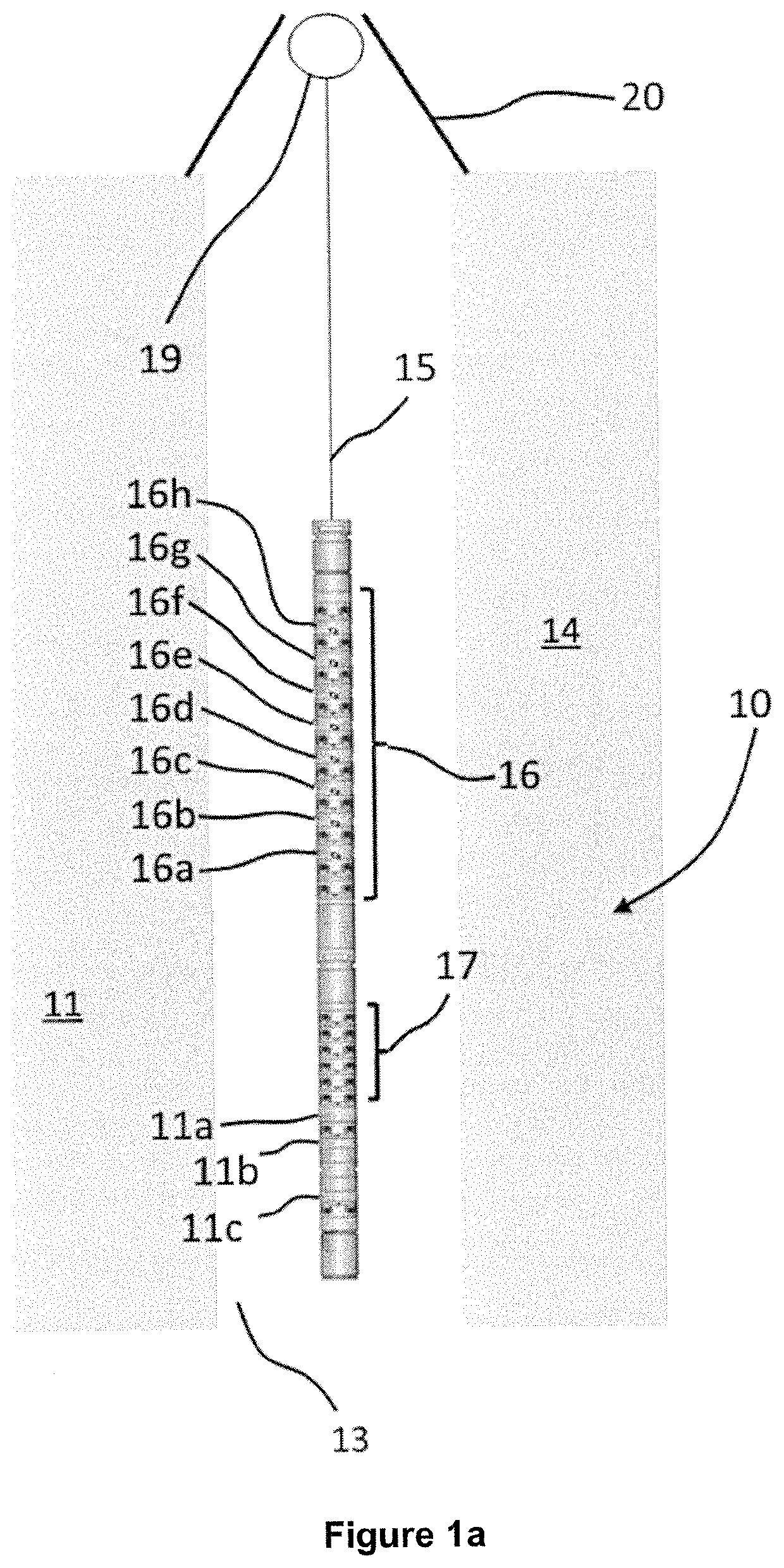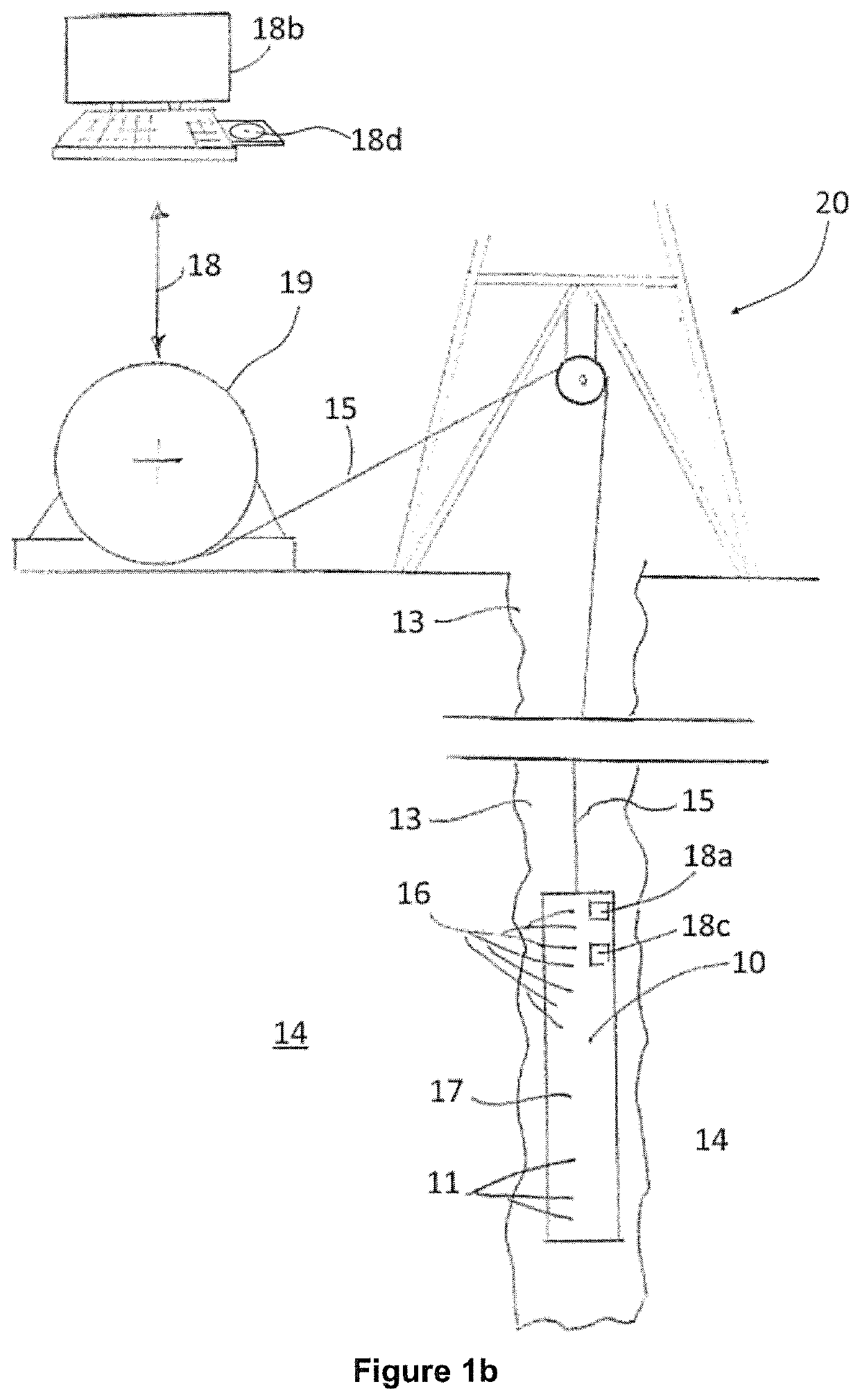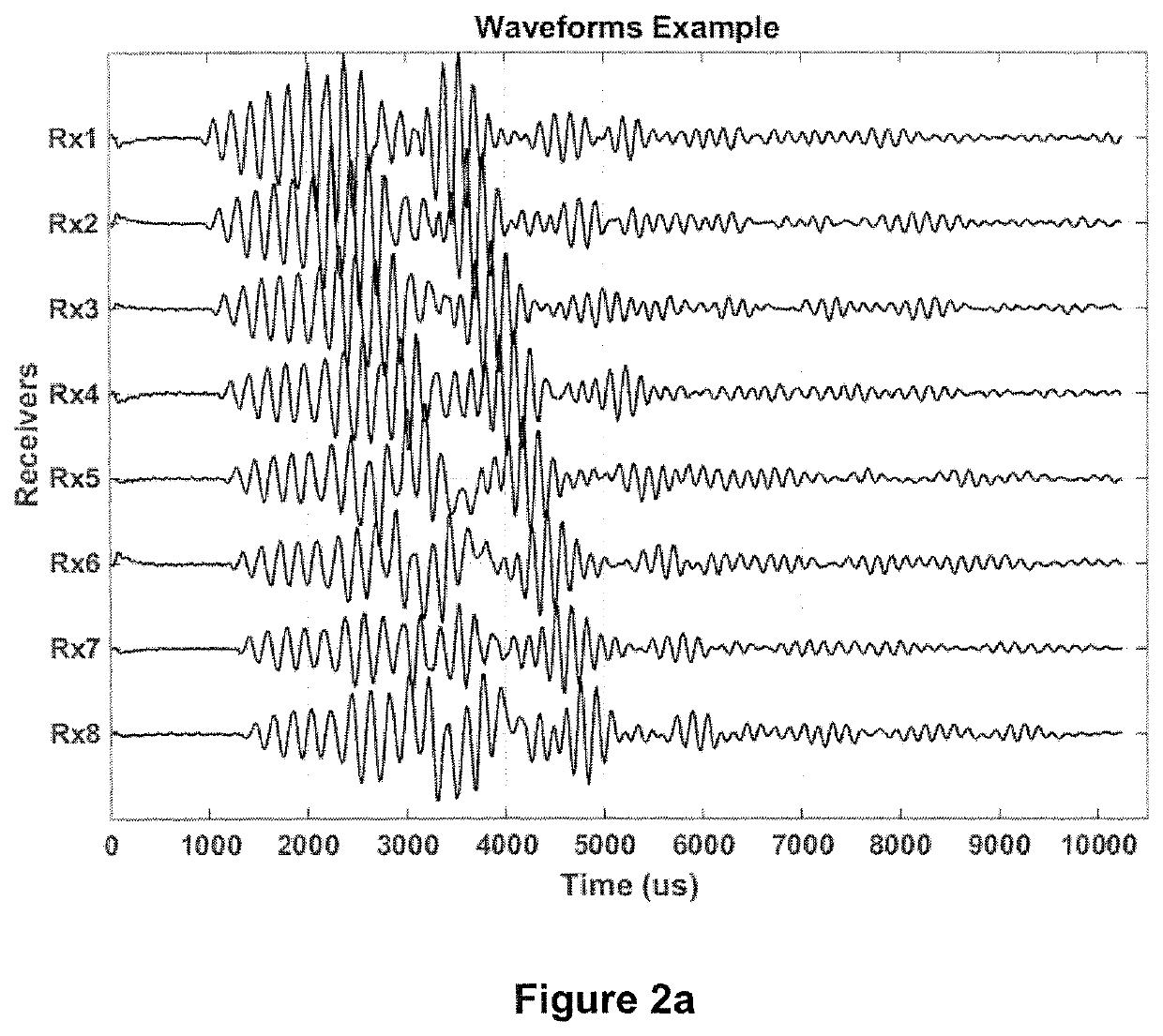Method of and apparatus for carrying out acoustic well logging
a well and acoustic technology, applied in seismology, geological measurements, instruments, etc., can solve problems such as inability to fit sigmoid function, method is likely to be sensitive to noise with high uncertainty, and real-world data may not be amenable to sigmoid function fit,
- Summary
- Abstract
- Description
- Claims
- Application Information
AI Technical Summary
Benefits of technology
Problems solved by technology
Method used
Image
Examples
Embodiment Construction
[0085]FIG. 1a illustrates one form of modern acoustic logging tool 10. Logging tool 10 includes in the illustrated embodiment three acoustic sources 11a, 11b, 11c secured towards the in-use downhole end of the elongate, cylindrical tool 10. The acoustic sources are respectively a monopole source 11a and X- and Y-axis dipole sources 11b, 11c.
[0086]The logging tool 10 also includes a series of receivers secured in a linear array 16. The receiver array 16 is spaced along the tool / sonde 10 from the sources 11a, 11b, 11c and is isolated from them by way of an acoustic isolator section 17. The isolator section 17 is intended to ensure that energy generated in the sources 11a, 11b, 11c does not contaminate the outputs of the receivers forming the array 16 by way of direct propagation via the material of the tool 10.
[0087]As is apparent from FIG. 1a, the receivers of the linear array 16 are spaced at intervals along a length of the logging tool. In the non-limiting arrangement shown in FIG...
PUM
 Login to View More
Login to View More Abstract
Description
Claims
Application Information
 Login to View More
Login to View More - R&D
- Intellectual Property
- Life Sciences
- Materials
- Tech Scout
- Unparalleled Data Quality
- Higher Quality Content
- 60% Fewer Hallucinations
Browse by: Latest US Patents, China's latest patents, Technical Efficacy Thesaurus, Application Domain, Technology Topic, Popular Technical Reports.
© 2025 PatSnap. All rights reserved.Legal|Privacy policy|Modern Slavery Act Transparency Statement|Sitemap|About US| Contact US: help@patsnap.com



